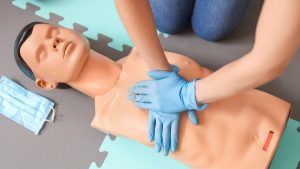Articles / Diagnosing and managing dental pain in general practice

These are activities that expand general practice knowledge, skills and attitudes, related to your scope of practice.
These are activities that require reflection on feedback about your work.
These are activities that use your work data to ensure quality results.
These are activities that expand general practice knowledge, skills and attitudes, related to your scope of practice.
These are activities that require reflection on feedback about your work.
These are activities that use your work data to ensure quality results.
While most dental problems are best managed by a dentist, many patients face barriers to accessing dental care, such as cost, location, or lack of availability.
A recent Healthed survey of more than 1500 GPs suggested that over 80% of respondents had seen at least one patient with dental or oral health problems in the past fortnight—and almost two thirds had seen more than one, with 22% reporting seeing five or more.
These findings are reflected in a recent study which found that approximately 1.3 % of all GP consultations in Australia involve oral health concerns.
Additionally, up to 41% of Australians report delaying or avoiding dental care due to cost, according to the Australian Bureau of Statistics.
Analysis of patient encounters between 2006 and 2016, by BEACH (Bettering the Evaluation and Care of Health), estimated that GPs in Australia manage over 1.5 million oral conditions every year.

Healthed’s survey also revealed that most GPs rely on self-education for their dental health skills. The lack of formal training in dental health helps explain why 40% of GPs feel only slightly confident to manage common dental problems and 11% feel not at all confident. Another 44% said they were moderately confident and just 5% said they were very confident.
Peter Parashos, Professor of Endodontics at the Melbourne University Dental School, says that while referral to a dentist is the ideal for most presentations, doctors need to have the skills to diagnose and offer appropriate first line treatment while the patient waits to see the dentist.
In Healthed’s survey, 60% of GPs said they frequently see patients with pain or sensitivity.
Professor Parashos believes that GPs can provide interim care by offering appropriate pain management and, if indicated, antibiotics.
Dental pain is typically due to three main pathologies:
Clinicians should keep in mind that dental pain can also result from non-dental conditions, such as temporomandibular joint syndrome, maxillary sinusitis, ear infections, or cardiac conditions, and GPs should consider these possibilities when assessing a patient’s symptoms.
Making a diagnosis or at least a provisional diagnosis will help GPs decide on the best course of action, Professor Parashos says. He recommends that as a minimum, a GP should have access to a dental examination kit with a mouth mirror, dental probe, and a periodontal probe.
Assessing oral and dental pain can be challenging, as patients may have difficulty describing their symptoms and may not have the dental knowledge to accurately identify the affected area.
Professor Parashos suggests that the SOCRATES method may be a useful tool to help GPs elicit a detailed and structured history of the patient’s pain.
Source: “Management of dental pain in primary care” Aust Prescr 2020;43:39–44
The management pathway in general practice is generally guided by the type of pain the patient presents with.
Dental sensitivity and reversible pulpitis
Patients may experience a sharp pain or discomfort in response to thermal, osmotic, or tactile stimuli. This type of pain is commonly associated with dentine hypersensitivity, which can be caused by enamel erosion, gingival recession, or other factors. If the patient is experiencing this type of pain or sensitivity, the affected tooth usually has inflammation of the dental pulp, which is the loose innervated connective tissue inside the tooth. Inflamed pulp is also called reversible pulpitis. The pain subsides when the stimulus is removed.
How to treat
Refer to a dentist and recommend desensitizing toothpaste, and analgesics if required. According to Professor Parashos, the combination of ibuprofen with paracetamol is ideal as the first line of treatment. Opioids such as codeine are not recommended.
Irreversible pulpitis
Irreversible pulpitis is a more severe form of pulp inflammation that can cause a dull, throbbing pain, which is often exacerbated by biting or tapping on the affected tooth. This condition usually arises from untreated or poorly treated reversible pulpitis. It is usually caused by deep dental caries or trauma. In some cases, irreversible pulpitis can progress to a dental abscess, which may cause more severe pain and swelling.
How to treat
Urgent referral to a dentist is required as the treatment for irreversible pulpitis usually involves root canal therapy or tooth extraction, depending on the extent of the damage to the tooth.
Effective pain relief can usually be achieved with paracetamol/ibuprofen combination. For severe pain, the Therapeutic Guidelines recommend paracetamol/ibuprofen together with an opioid, but Professor Parashos believes an opioid should only be added if the paracetamol and ibuprofen combination is ineffective.
How to treat dental pain with swelling
How to identify and treat maxillary sinusitis
This type of pain may be caused by inflammation of the sinuses, which is sometimes due to a dental infection of a posterior maxillary tooth. It involves a continuous dull pain over the cheek and upper teeth that flares up when the patient bends forward or lies down, bites, touches it or exercises. Patients with maxillary sinusitus may have had recent upper respiratory tract infection, a history of chronic rhinitis or pain when flying.
An odontogenic cause may be suspected when:
Source: Aust Prescr 2020;43:39–44
If you suspect the sinusitis may have a dental origin, refer the patient to a dentist. Treatment options may include antibiotics, decongestants, and referral to an endodontist if necessary.
“Swelling where there’s obviously systemic spread of infection justifies antibiotics, but it also justifies urgent referral. If they present to a dental hospital with swelling for example, most patients will receive some sort of surgical care, such as extraction of the tooth or incision and drainage, but it’s not very often that they will prescribe antibiotics. However, as per the Therapeutic Guidelines, if dental treatment is unlikely within 24 hours, then antibiotic therapy can be started, but stressing that dental treatment MUST be sought.” – Professor Parashos
Healthed’s recent survey suggests that GPs are commonly prescribing antibiotics for dental infections, but other interventions are preferred in many cases.

Practice points on antibiotics
In general, Professor Parashos says GPs should only consider prescribing antibiotics if there are signs of systemic spread of infection. If there is localised facial or intraoral swelling, the patient should be referred to their dentist or to a dental hospital for immediate management. However, as recommended above, if dental treatment is unlikely within 24 hours, then antibiotic therapy can be started, but stressing that dental treatment MUST be sought.
For more detail on the clinical features and management of localised, spreading and systemic odontogenic infections, see this table produced by the Therapeutic Guidelines.
Communicating urgency is crucial
Unfortunately, many dentists and dental hospitals have lengthy wait times. It is important for medical practitioners to know what resources and services are available in their area to refer to.
If there’s a dental hospital or local community health centre nearby, Professor Parashos recommends liaising with them by phone to find out how likely it is they’ll be able to see patients that day, or what the waiting list is for urgent care.
When you ring up services to refer people, it’s important to communicate the degree of urgency, especially where there is facial or intraoral swelling, so they can be triaged appropriately.
Anything that is perceived not to be urgent may be delayed to the next day, so it’s important to make staff aware of bleeding, trauma, intraoral swelling or swelling due to spreading infections, or if the patient is generally very unwell so that they will be seen sooner, Professor Parashos says. Most services will have provisions for emergency services, he says.
However, where dental treatment is highly unlikely to be provided within 24 hours, a GP can commence antibiotic therapy and ensure that the patient will seek and receive dental care.
References
Cheng, An-Lun, et al. “Encounters and management of oral conditions at general medical practices in Australia.” BMC health services research 22.1 (2022): 1013.
Lockhart, Peter B., et al. “Evidence-based clinical practice guideline on antibiotic use for the urgent management of pulpal-and periapical-related dental pain and intraoral swelling: A report from the American Dental Association.”
“Acute Odontogenic Infections” in Therapeutic Guidelines; Oral and Dental, v3, 2019, pp79-86
Barnett T, Hoang H, Stuart J, Crocombe L (2016) “Sorry, I’m not a dentist”: perspectives of rural GPs on oral health in the bush. The Medical Journal of Australia 204, 26
Managing dental pain in a GP setting https://www1.racgp.org.au/newsgp/clinical/managing-dental-pain-in-a-gp-setting
Timmerman A, Parashos P. Management of dental pain in primary care. Aust Prescr 2020;43:39–44. https://www.nps.org.au/australian-prescriber/articles/management-of-dental-pain-in-primary-care
Scully, C. (2012), Aide memoires in oral diagnosis: mnemonics and acronyms (the Scully system). J Invest Clin Dent, 3: 262-263. https://doi.org/10.1111/jicd.12005
Dental abscess: A potential cause of death and morbidity https://www1.racgp.org.au/ajgp/2020/september/dental-abscess-death-and-morbidity
Management of dental trauma by general practitioners https://www.racgp.org.au/afp/2015/december/management-of-dental-trauma-by-general-practitione
Solving dental problems in General Practice https://www.racgp.org.au/afp/2009/april/solving-dental-problems

Conversation Strategies for Unfunded Vaccinations

Ophthalmology Update: New Treatments for Old Conditions

Fracture Prevention and Osteoporosis Management After Menopause

Testosterone for Men – Common Myths and Recent Development



Yes, if the referral process involves meaningful collaboration with GPs
Yes
No
Listen to expert interviews.
Click to open in a new tab
Browse the latest articles from Healthed.
Once you confirm you’ve read this article you can complete a Patient Case Review to earn 0.5 hours CPD in the Reviewing Performance (RP) category.
Select ‘Confirm & learn‘ when you have read this article in its entirety and you will be taken to begin your Patient Case Review.